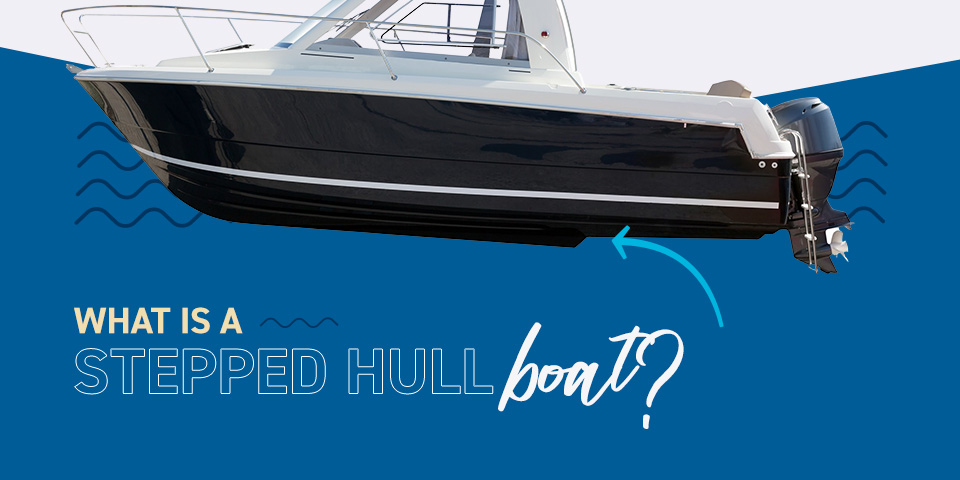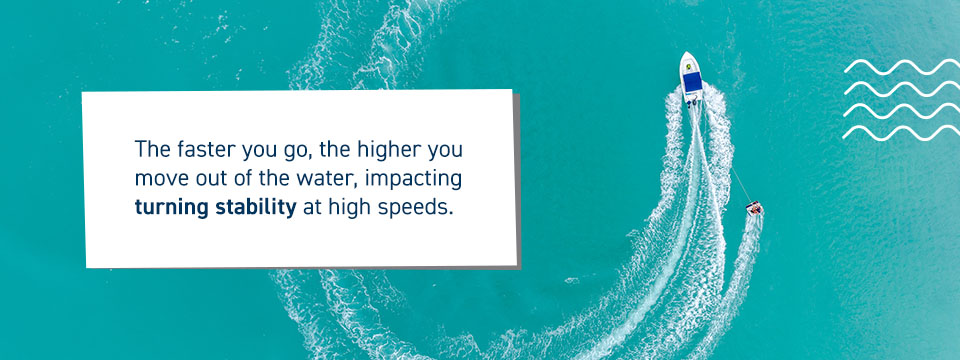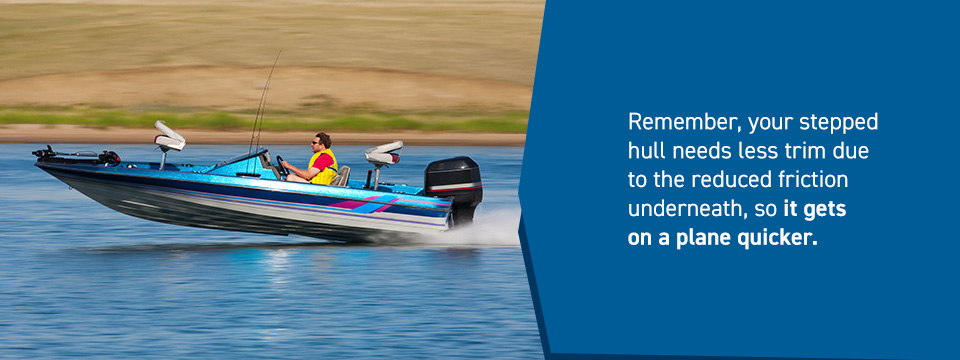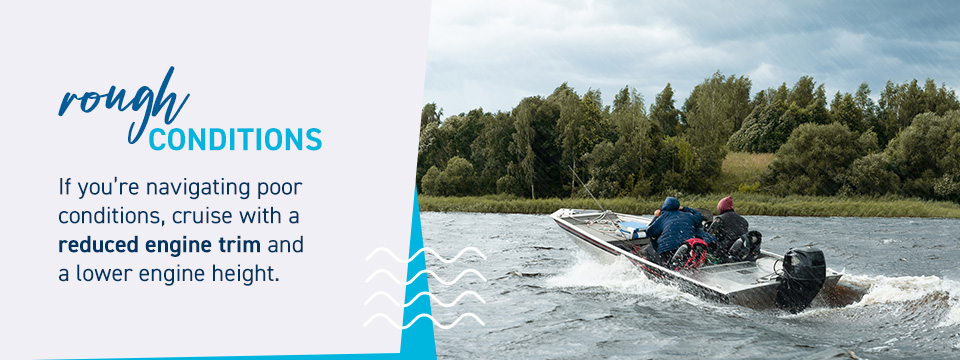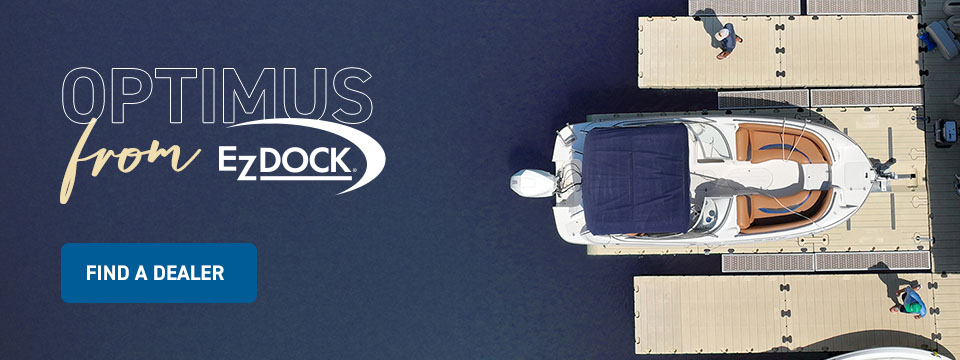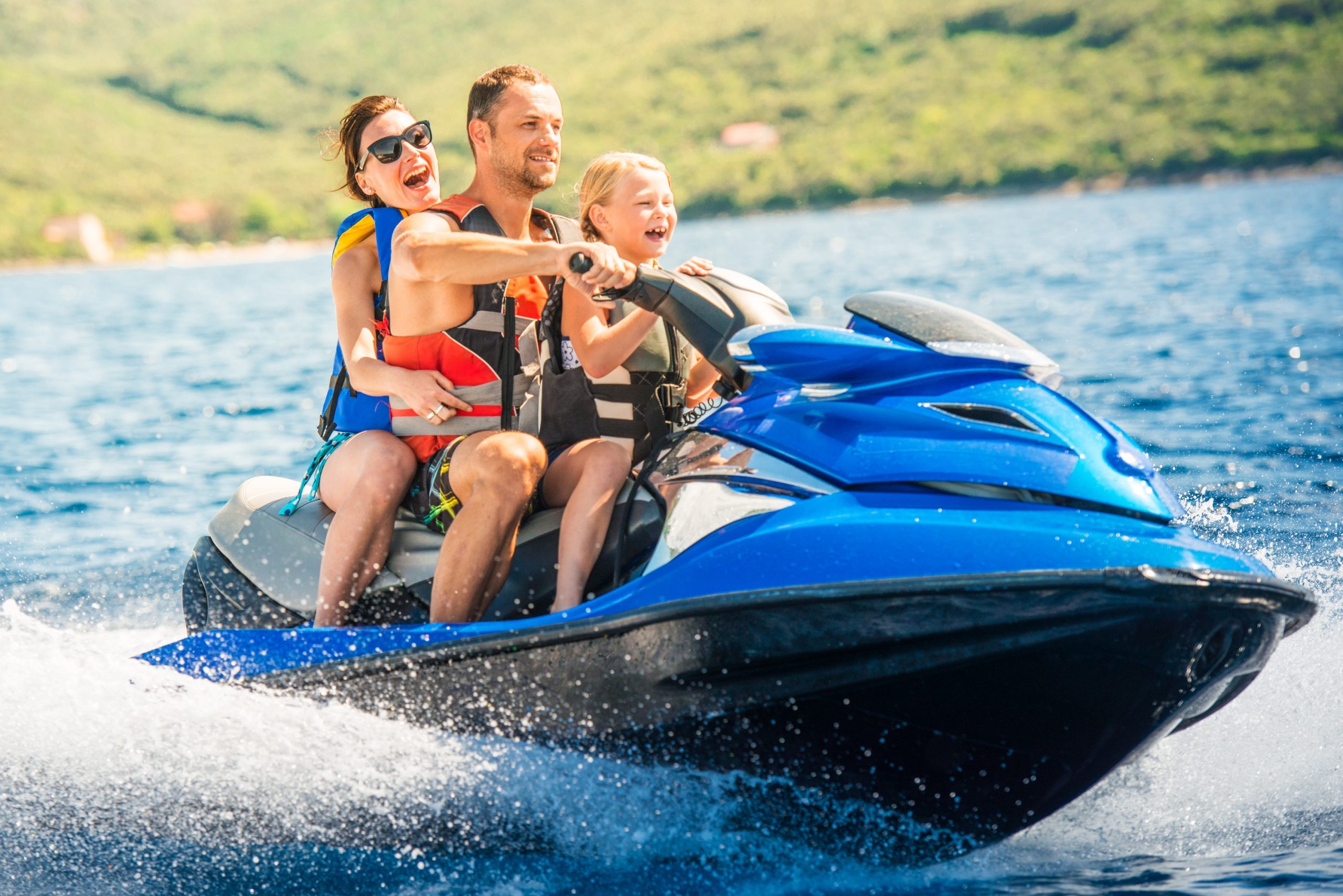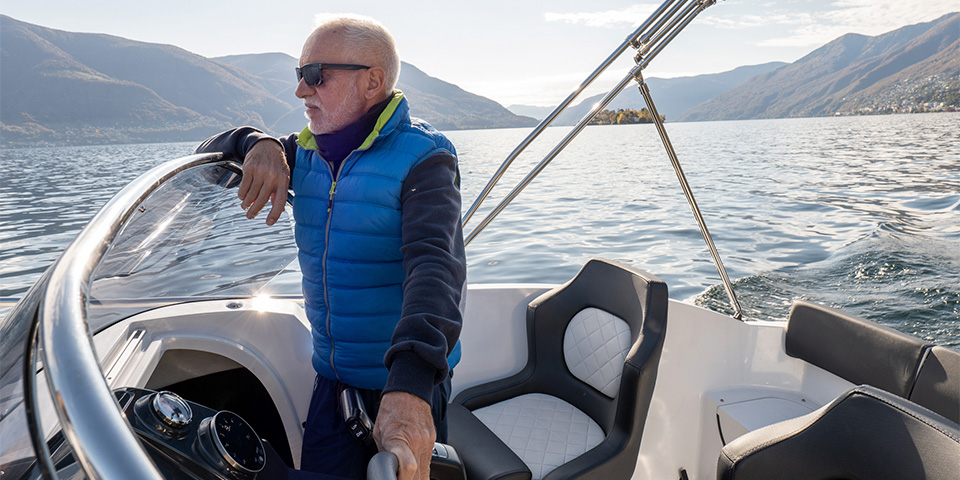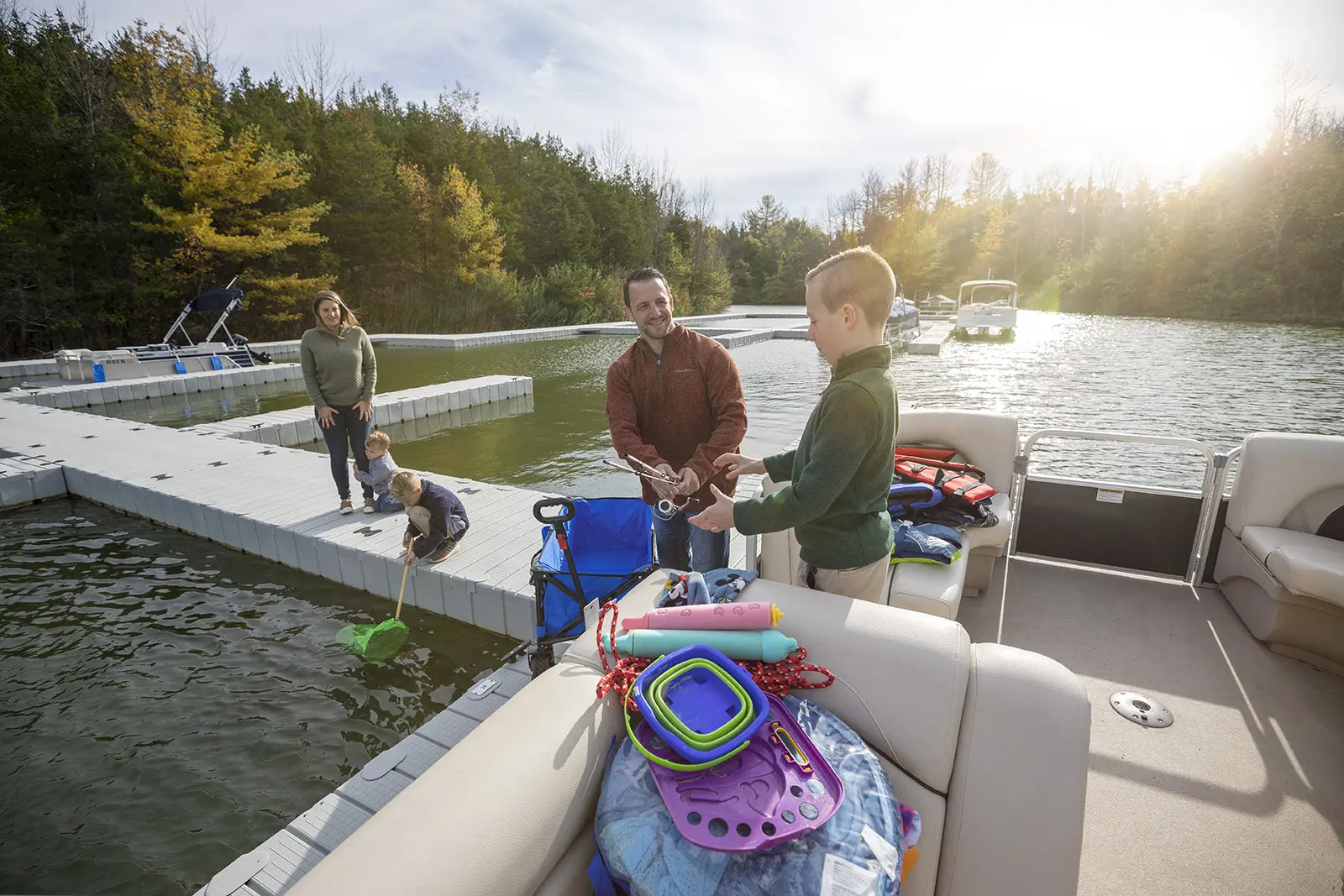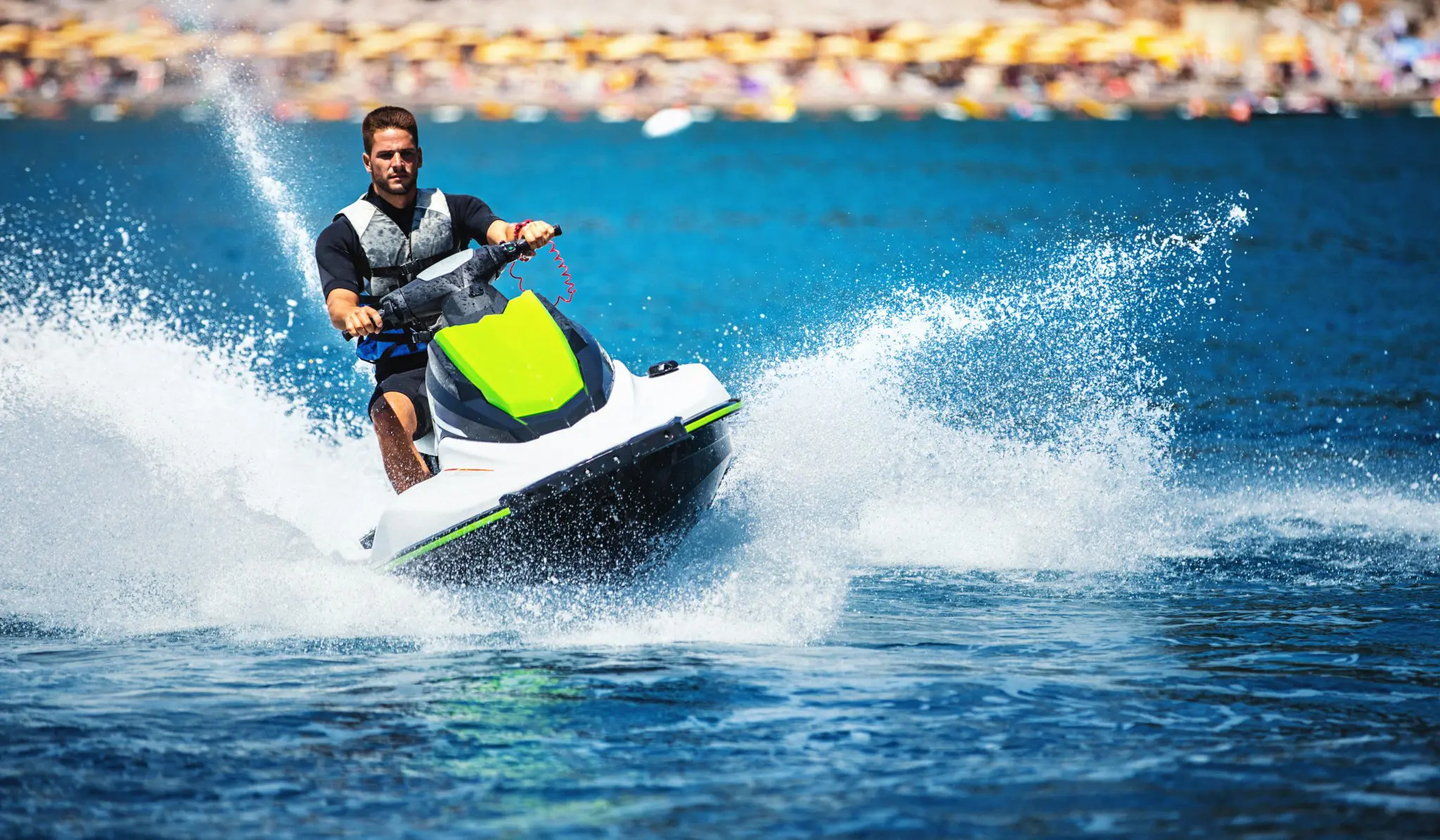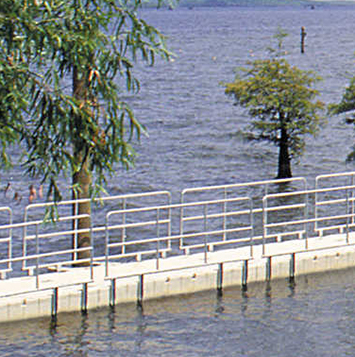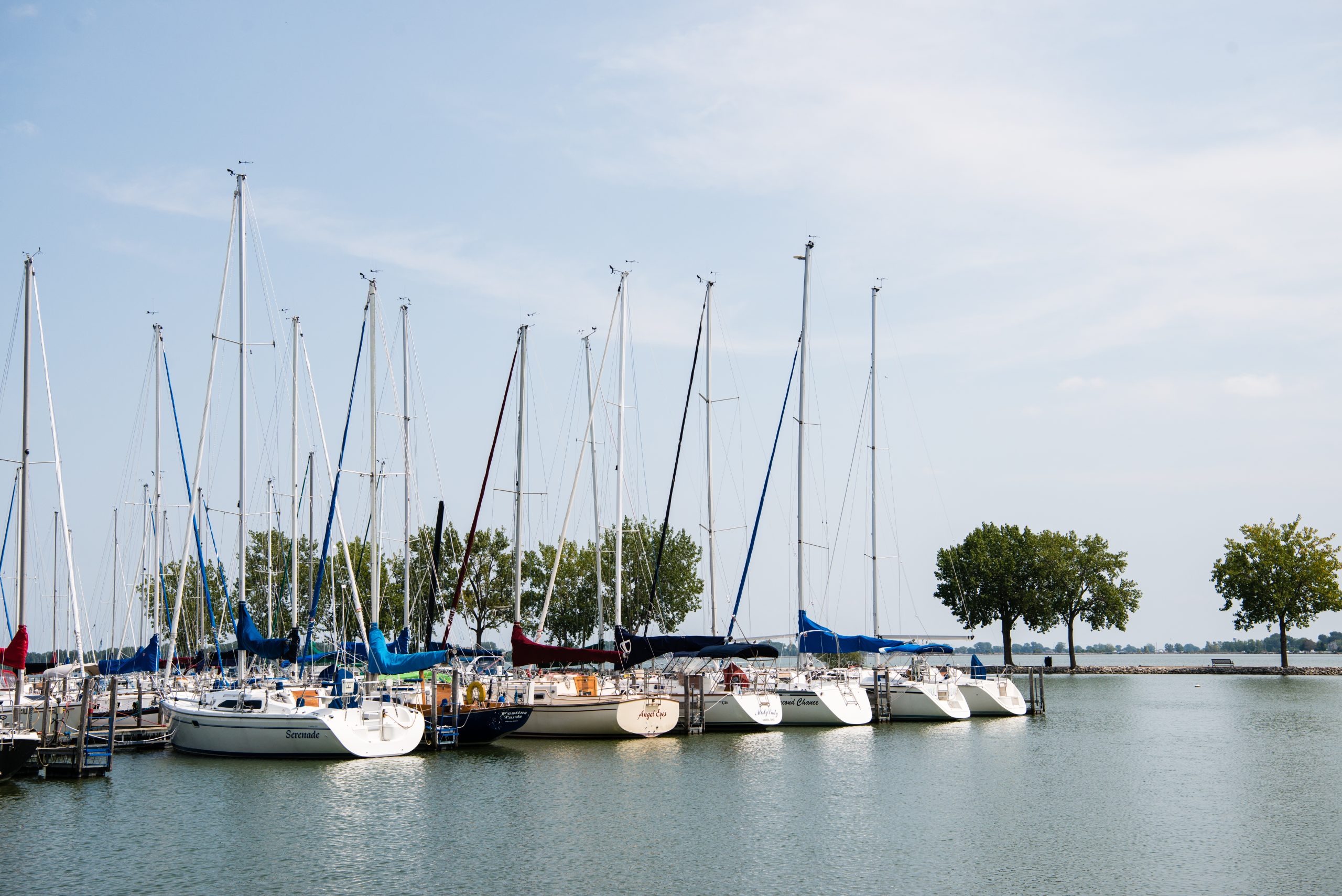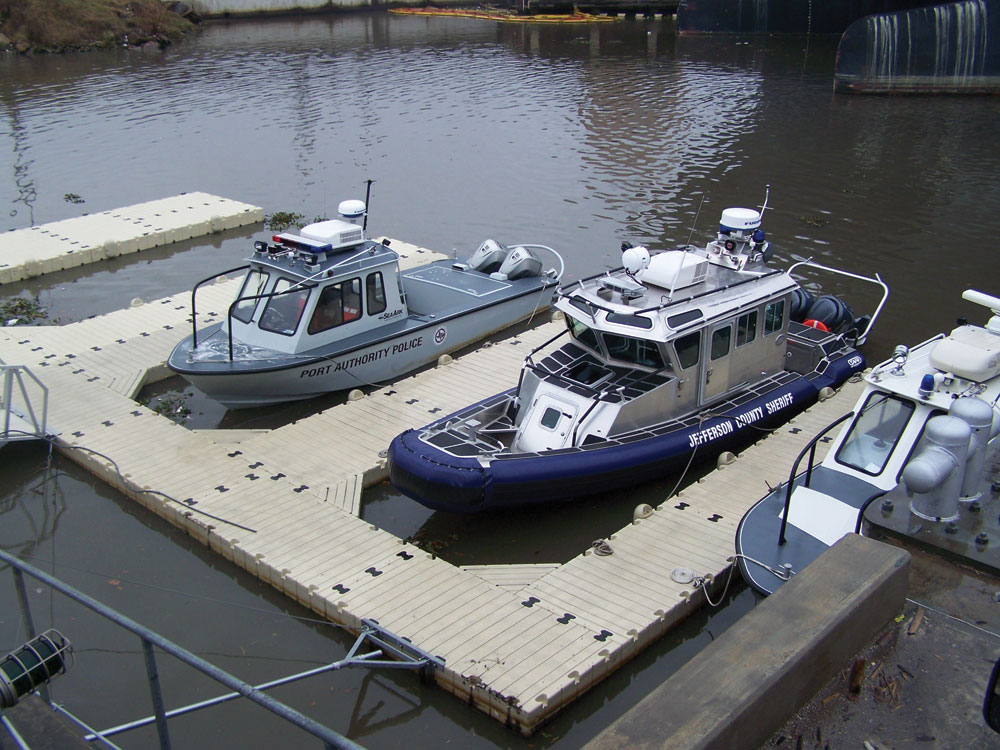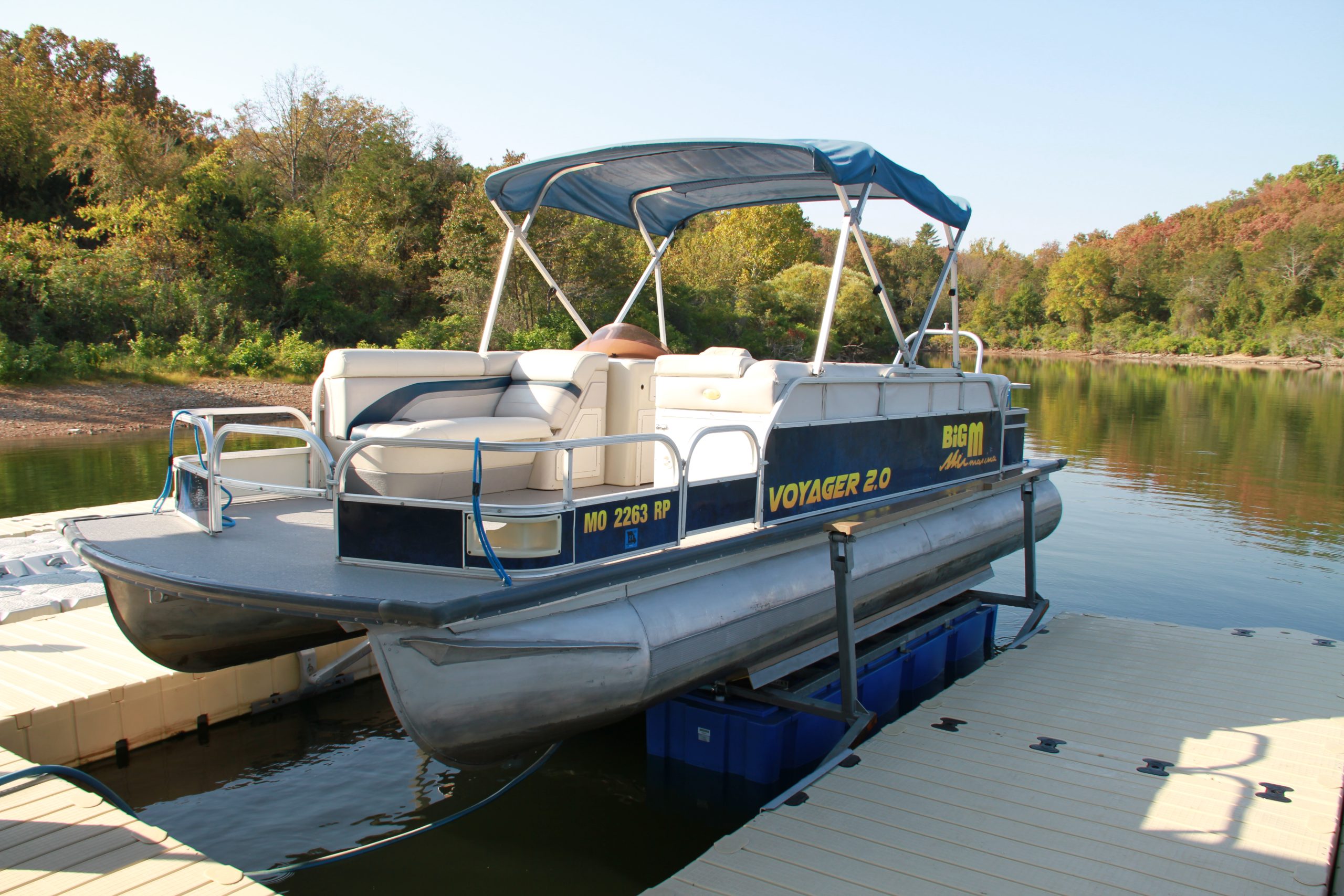Filters
What Is a Stepped Hull Boat?
Whether you’re an experienced boat owner or buying a boat for the first time, it’s worth evaluating your options before you invest in a new vessel — and hull type is an important consideration.
The right hull for you depends on how you plan to use your boat. If you’re looking for speed, performance and efficiency, a stepped hull design may be the ideal choice. Before you purchase a stepped hull boat, understanding the advantages and disadvantages is essential to ensure you get the best boat for your unique and exhilarating hobby.
All About Stepped Hull Boats
A stepped hull boat features a hull design that changes how the boat interacts with water flow. Unlike a regular boat, a stepped hull has notches or indentations from one side of the bottom to the other, forcing water flow to separate from the hull and reducing the contact surface.
At speed, the “steps” separate much of the water running underneath from the hull, creating a vacuum and sucking in air, which mixes with the water. At slow speeds, the entire hull is in the water, but as your speed increases, the water and air mixture lifts the boat and reduces contact with the water. Overall, the less water, the less drag.
Multiple steps create pressure points along the hull that increase lift. The lift from these pressure points supports the boat while running and regulates the trim angle. When you combine these actions, the result is better overall boat performance.
Stepped Hull vs. Traditional V-Hull Boats: What’s the Difference?
The choice between a stepped hull vs. a non-stepped hull boat is one that impacts your overall boating experience. Both traditional and stepped hull boats feature v-shaped bottoms, allowing them to cut through the water and provide a comfortable ride even in rough conditions.
As the stepped hull design introduces air under the boat, it often feels lighter and easier to turn than its traditional counterparts. The faster you go, the higher you move out of the water, impacting turning stability at high speeds.
A traditional v-hull may contend with extra drag. As it’s lower in the water, it provides a more stable center of gravity. These boats have a more secure grip on the water than their stepped counterparts, at the cost of some speed and efficiency.
Ultimately, your choice of hull is one of personal preference. If you want to reduce drag and increase fuel efficiency, a stepped hull could be the answer. If you seek a predictable ride and the ability to change trim — or the boat’s angle in the water — a traditional v-hull is more suited to your needs.
The Benefits of a Stepped Hull Design
Stepped hulls are the preferred choice for many boaters, especially those who prefer fast-planing boats that glide across the water. Some of the many benefits of a stepped hull include:
- Speed: Steps reduce frictional drag on the water, making stepped hull boats 15% faster than those with standard hulls. Stepped hulls distribute lift evenly, keeping your boat level at higher speeds and maintaining a consistent trim angle. They often give you a smoother ride and can make it easier to maintain top speeds.
- Efficiency: When you reduce friction and drag, your vessel becomes more efficient. As your boat requires less power to move across the water at high speeds, it uses less fuel, making it more cost-effective to run and reducing emissions.
- Built-in trim: A stepped hull boat design automatically runs at an optimal trim angle, eliminating the need to adjust the trim with outboards, drives or trim tabs.
- Comfort: The reduced friction a stepped hull provides can make your ride more comfortable, improving the handling and providing a softer landing at high speeds. As you’re almost gliding across the water, you can enjoy reduced pitch, slamming and spray.
- Visibility: The consistent plane you achieve in a stepped hull boat reduces spray and improves your visibility on the water.
- Holeshot: The term “holeshot” refers to a boat’s initial acceleration from a stationary point. A well-designed stepped hull improves the holeshot experience, streamlining the bow rise and keeping the experience smooth.
Stepped Hull Disadvantages
Like any design, the stepped hull has benefits and drawbacks. When choosing a boat to buy, knowing these disadvantages is essential.
- Noise: Depending on the design, stepped hull boats can be slightly noisier, which could disadvantage those seeking a calm and quiet day out on the water.
- Price: The additional design and manufacturing required for a quality stepped hull boat make them more expensive.
- Handling: Some boats that offer stepped hull options can be more challenging to drive at high speeds or in choppy water. Always ensure you test drive any boat before purchasing it so you’re aware of potential limitations and can make an informed decision.
- Design: Some stepped hull designs only offer efficiency advantages at high speeds. Speak to your boat dealer about the limitations of your specific boat model.
Tips and Tricks for Driving a Stepped Hull Boat
Interested in investing in a stepped hull boat? The following tips and tricks can elevate your boating experience:
Adjust the Trim
Trim refers to how your boat rides in the water — bow down, bow level or bow up. Some boats offer adjustable trims to boost comfort and efficiency. When trimming your boat, you must rely on feel, as there’s no one-size-fits-all setting. Trimming down is often best for getting on the plane.
Once your boat runs, you can trim the drive up to increase speed and efficiency. Adding more trim reduces your wetted surface and increases velocity, but excessive trim can reduce hull stability. Finding the perfect trim balance takes practice, which means you can spend more time out on the water.
Create a Stepped Hull Routine
Different boats require different throttle-up routines. The first step when you throttle up is to ensure your passengers know you’re changing speeds. Then, straighten your outboards and trim them down, lowering the bow and elevating the stern to lift the boat out of the water faster. Remember, your stepped hull needs less trim due to the reduced friction underneath, so it gets on a plane quicker.
Get Up on the Plane
You can only start increasing the speed when your boat is planing. Getting up on the plane takes practice and depends on the weight load and water conditions. To rise to the plane:
- Increase the throttle and trim the engine outward in the first few seconds.
- As you increase your speed, continue adding trim until you reach an appropriate cruising speed for your boat.
- Once you’re on the plane, trim your engine until the steering feels light and responsive.
Make Some Cruising Adjustments
Once your boat planes, you can trim the engine to about a third and throttle back to find the best cruising speed. Take advantage of your engine gauges to find the best fuel efficiency and trim up or down to adjust that number until you find a speed and efficiency you like. Generally, the front half of your boat should stay above the surface.
Distribute the Weight
Balanced weight improves boat stability at high speeds. If your fuel load, batteries, passengers and cargo are equalized on each side, you could put your boat on balance. Unbalanced vessels could cause unsafe handling in challenging conditions. For example, if you’re driving alone, adding some weight to the passenger side can keep your boat balanced.
Turn Safely
Stepped hull boats can be more complex to drive, as the edges can change the bottom handling when you execute certain maneuvers. Trimming down before you enter a turn can cause instability and even rollover, depending on the make and model of your vessel. Speak to your supplier about trimming when executing turns, or consider taking lessons from a boating instructor.
Understand Rough Conditions
Any boating enthusiast knows how quickly the conditions can change. When you find yourself in heavy crosswinds or choppy waters, you can learn much about your boat, but knowing the basics is critical before you start driving.
When you drive at high speeds, it’s instinctive to back off the throttle if you encounter a potential issue like waves or high wind. Sudden speed changes can be a mistake, triggering hull instability that could cause hooking, rolling and several other dangerous situations. Instead of suddenly decelerating, trim down a little and ease off the throttle slowly, dampening excessive hull reactions and allowing you to tackle the obstacle safely.
If you’re navigating poor conditions, cruise with a reduced engine trim and a lower engine height. Approach cross waves with a bow on an angle of 30 degrees and avoid any abrupt throttle, steering and trim changes.
Dock Like a Pro
When you’re done for the day, getting your boat safely back to port is your final hurdle. Again, docking your boat takes practice, but following these simple steps can get you safely to land:
- Get prepared: Take some time to prepare before you approach the dock. Ensure your fenders are at the appropriate height for the pier and boat to meet the port when you arrive. Adjust the bow and stern lines attached to the boat cleats so they’re in the right place to fasten to the dock.
- Look around: Stay aware of your surroundings and plan a path to the dock, considering any other boats. Give yourself enough space to turn around if you need to, and consider the wind and current conditions.
- Approach slowly: Allow yourself as much time as you need to align your boat. A slow approach is essential, as you’re bound to bump the dock occasionally and want to keep damage to a minimum. Try to approach at a 45-degree angle.
- Reverse: When your bow reaches the pier, put your boat into reverse and readjust, directing your engine toward the dock. Make one final readjustment and reverse until you’ve positioned your stern to the pier.
- Tie up: When you’re happy your boat is in position, affix the bow and stern lines to the pier and put your boat in neutral. Keep the engine running when you tie off in case you need to make last-minute adjustments to the wind or currents. Once your boat is secure, you can turn off the engine and disembark.
Get to Know Your Boat
The more time you spend driving your boat, the better your “feel” of how it operates in the water. Developing a feel takes time. Take it slow until you’re used to the handling and understand your vessel’s quirks. As you get more comfortable, you can increase the speed of your stepped hull boat and experience improved performance in a safe space.
Find a quiet place to learn how your boat responds to different inputs. Start at slow speeds and low trim angles, testing your steering responses. As you increase your trim and speed, your boat’s reactions will change. Keep at it. Responding to your boat’s cues will soon become second nature.
A Boat Port Made for Stepped Hull Boats
If you’ve chosen a stepped hull, you have a few points to consider to keep your boat in the best possible condition. As stepped hulls have indentations, they’re prone to dock and port interference, making them more challenging to access and protect. The OPTIMUS BoatPort from EZ Dock provides a safe and accessible storage option for stepped hull boats.
Some of the many benefits of the OPTIMUS BoatPort include:
- Maintenance access: Boat maintenance can be tricky, as you need safe access for regular inspections. The OPTIMUS BoatPort makes entry hassle-free, so you can clean and maintain your boat and keep it in the best condition.
- Anti-foul paint applications: Anti-fouling paint prevents various organisms from attaching to your boat’s hull, and if they do stick, it slows their growth. When you dock your boat, it bumps against the port, scratching off the paint. The OPTIMUS BoatPort’s innovative design reduces the need for frequent anti-foul paint applications, extending your boat’s life span and saving you time and money in regular applications.
- Entry and exit: Boating is more enjoyable when you can enter and exit your vessel smoothly. Our EZ Dock Boat ports offer low-angle access for a smooth boarding experience.
- Versatility: Your port should keep your boat safe and provide a perfect fit. The OPTIMUS BoatPort accommodates boats up to 7,000 pounds in wet weight between 16 feet and 24 feet in length. You can also create additional space with our 12-inch side extensions for more flexibility around your vessel.
The OPTIMUS BoatPort is an innovative solution for any stepped hull boat owner. In addition to the benefits listed above, this boat port has an optional stepped hull EZ Slide, eliminating interference for stepped hulls, streamlining access and providing the ultimate protection.
View the OPTIMUS From EZ Dock Today
When you invest in a new boat, it makes sense to take all the necessary steps to keep it in pristine condition for as long as possible. At EZ-Dock, we believe in pioneering versatile, low-maintenance and environmentally friendly docks, ports and accessories to streamline your boating experience. Our premium floating docks are free of traditional dock repair challenges like splintering and weathering and provide easy access, designed for the boat and passengers.
The OPTIMUS BoatPort is just another way we make life easy. Browse our extensive selection of dock solutions, boat and PWC lifts and accessories online, or find a dealer near you. Alternatively, request a quote today, and one of our skilled representatives will contact you to answer any questions.

